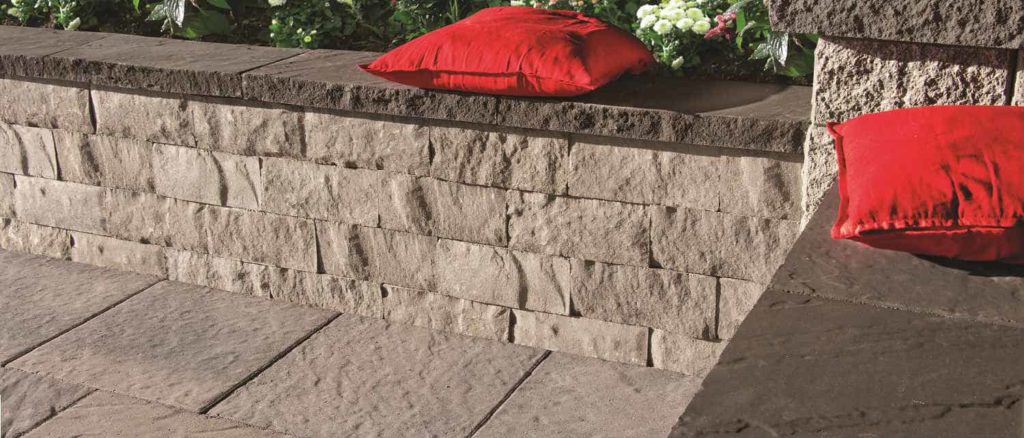Also known as ‘retaining walls’, garden walls can make or break a yard – literally…
If you’re thinking about selling your house, garden and retaining walls are a great way to boost the curb appeal and value of your home.
They draw the eye into the garden and give the appearance of a major landscaping design with relatively little effort.
They can be a DIY project, for the adventurous gardener, but if a retaining wall is needed to maintain the integrity of the garden structure, it’s always wise to call in a pro (or risk disrupting the flow of runoff and flood every lawn on the block!)
Whether to boost the appeal, or to improve your garden for your own enjoyment, a garden / retaining wall might be just the addition you’ve been looking for.
What Is A Garden, Or Retaining, Wall?
A garden, or retaining wall, is a concrete or stone, for lack of a better word, wall. They are used in a variety of ways in landscaping, including creating raised beds, an elegant border, or to help with soil erosion and drainage.
While similar, a garden wall is more about creating raised beds and upping the look of the landscape , while the retaining wall is more functional, to deal with uneven ground levels and slopes.
Why Should You Have Garden Or Retaining Walls?
Walls serve a practical, as well as aesthetic purpose. A solid retaining wall is designed to hold back the pressure that the soil exerts when there are two different ground elevations in a garden.
A slope might not be what you want in the garden, so the wall acts to break up the two elevations. The stability of the soil and more elevated portion of the garden is ensured by the solid stone or concrete wall, which takes the bulk of the pressure being exerted by the soil.
Garden walls are more about design: they typically aren’t as tall and are used more to create divided garden areas and beds, rather than to deal with slopes or elevations. They can be created in curved designs, which are very elegant and can enhance your flower beds and other divided garden areas immeasurably.
Materials Used In Garden Walls
Whether you opt for stone or concrete, most walls products are mortarless these days, which makes garden walls a project that the DIY landscape gardener can undertake (with caution.)
You can also opt for a combination of concrete and stone, such as where you use natural stone for steps or for the caps / coping; you or your hardscaper can create an elegant design that will last for years.
Concrete forming technology has resulted in concrete wall products that have the look and feel of natural stone, available in a range of textures and colours.
Concrete is lighter than natural stone, making it possible to build a wall without the extensive use of machinery, though it does require a level base, which might take some effort to dig down to create, to prevent the wall from shifting down the road.
Concrete wall systems are designed for easy tongue-and-groove interlocking installation and the new designs allow you to create curves that are still smooth and consistent.
One of the biggest pluses to concrete, particularly if this your first attempt at building a wall, is that is relatively inexpensive, compared to natural stone.
Those points made, natural stone has a beauty to it that is unmatched in other products.
The stones are different shapes and sizes, so they take more creativity to fit together tightly to build the optimal wall, but the result is gorgeous. Natural stone is stronger—and consequently heavier to work with—and requires less effort during the leveling process, as most natural stones aren’t perfectly level to begin with.
You may need some machinery to bring in natural stone and it is much harder to create a curved, consistent look. But when a natural stone wall is put together, with flair and design, it’s a sight to behold!
Should You DIY Your Wall?
The short answer is: Probably not.
Building a retaining wall to deal with unequal ground levels without the help of a professional CAN be risky. You want to be sure that you aren’t interfering with run-off patterns. Drainage that isn’t planned properly could end up seeping into your—or your neighbour’s—basement, among other risks.
Like what? Foundation erosion, drowning plants and trees, wood rot on decks and other garden features, pests and so on!
Building a garden wall, which is far more about creating a design that you want for your yard, is much simpler and can be done with a little design help from your local garden centre. With it, you will soon have a new focal point in your yard and a new area to grow flowers, plants and trees.
Concrete or stone, DIY or professionally installed, consider garden or retaining walls when you’re planning your landscaping changes: they can add a real dimension of visual interest to your yard, helping it to make it an oasis for you and your family to enjoy!

